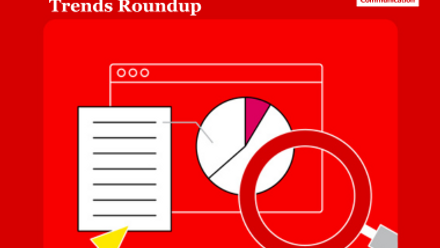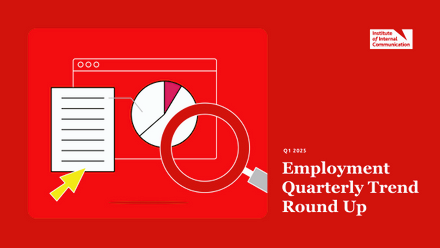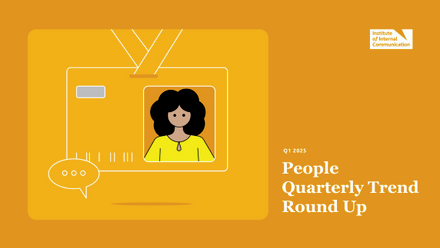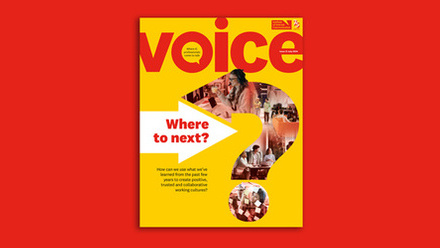Supporting an ageing workforce’s career mobility prospects
A recent OECD UK-focused report highlights significant shifts in the nation’s workforce. Employment rates for workers aged 65-69 have risen dramatically from 11.3% in 2000 to 26% in 2023.
Whilst older workers are staying in employment longer, doing so is not without its challenges. They face substantial barriers to career adaptability, creating a paradox in today's dynamic labour market.
The transition to a greener economy and AI-driven technologies demand greater career flexibility throughout one’s working life. However, current systems fail to support mid-to-late career workers, with insufficient career guidance and upskilling opportunity available. UK government’s planned Lifelong Learning Entitlement (offering four years of post-18 education funding) may be one of the ways in which prospects are transformed, although it’s not available to those aged 60-plus.
What are the implications for employers of accommodating an ageing workforce? Job quality emerges as crucial for retention, with 38% of older job-changers citing low pay as their primary motivation for leaving, according to the OECD’s report.
In addition, poor health remains a leading reason for exiting the workforce prematurely. This is particularly challenging for SMEs lacking robust occupational health provisions. The report emphasises that AI could enhance job quality through task automation, although there is a flipside risk of increased stress without thoughtful implementation.
Internal communicators can help support the career mobility prospects of their organisations’ ageing workforces by developing targeted campaigns that normalise career flexibility and transitions at all life stages. They can also promote awareness of the learning opportunities available to colleagues.
The internal communication profession is ideally positioned to facilitate intergenerational dialogue, sharing success stories of older workers' career pivots whilst addressing ageism concerns. And the neutral position held by internal communication means it can advocate for flexible working policies, health and wellbeing programmes, ensuring older workers are included in skills development communications.
By positioning career mobility as an organisational strength rather than a disruptor, internal communicators can help nurture inclusive cultures where experience is married with innovation, to the benefit of older workers and organisational resilience alike.
The future of jobs: implications and challenges
The World Economic Forum's annual Future of Jobs Report is always rich in detail about where the future of work is heading. Its 2025 edition brings together the perspectives of over 1,000 leading global employers – collectively representing more than 14 million workers across 22 industry clusters and 55 economies from around the world.
It examines how the over-arching future of work macro-trends impact jobs and skills, and the workforce transformation strategies employers plan to embark on in response, across the latter half of the 2020s.
The key learning this year is that the employment landscape is set – unsurprisingly – for dramatic transformation by 2030. Broadening digital access emerges as the most significant driver of change and is expected to transform 60% of businesses. However, this digital revolution, alongside AI advancements and automation, will create a paradox – simultaneously generating the fastest-growing and fastest-declining job roles.
The numbers are striking. 22% of today's jobs will be affected by structural changes, creating 170 million new positions whilst displacing 92 million others, resulting in a net gain of 78 million jobs globally. Frontline roles like farmworkers and delivery drivers will see the largest absolute growth, whilst technology-related positions – including AI specialists and big data experts – will experience the fastest percentage growth.
This transformation brings significant challenges. Workers face considerable upheaval, with 39% of existing skill sets predicted to become outdated by 2030. The most in-demand skills will include analytical thinking, resilience and AI literacy, whilst certain manual skills will decline in importance.
Perhaps most concerning is that skill gaps represent the biggest barrier to business transformation, with 63% of employers identifying this as a major obstacle. Whilst 85% plan to prioritise upskilling, the reality is stark: if the global workforce were 100 people, 59 would need retraining by 2030 – and yet 11 are likely to miss out entirely.
The emergent message is clear. The future of work demands unprecedented investment in workforce development. Success will depend on organisations' ability to bridge skills gaps whilst supporting colleagues through this period of extraordinary change – see below for ways in which internal communication professionals can help colleagues navigate it.
The upskilling imperative: why it’s now time to scale up efforts
Despite uncertainty around AI's future impact, two trends related to it stand out. First, jobs will transform as new technologies handle more tasks, and second, upskilling for career mobility will become increasingly essential.
The transition to AI is accelerating workplace transformation, with 20% of workers already using generative AI professionally, according to a May 2025 McKinsey report. Whilst this survey focussed on US workers, who have traditionally been more adaptable than their European counterparts, changing occupations three times more frequently than the latter, it provides a critical take-away relevant to workers in all advanced economies. This is that continuous learning and upskilling have become the critical missing piece for successful career progression.
The research reveals that 45% of employed Americans cite lacking relevant skills, experience or credentials as their primary barrier to advancing their careers. This skills gap is particularly pronounced, given the World Economic Forum’s projections that 1.1 billion jobs are set to be radically transformed by technology in the next decade.
Its Reskilling Revolution initiative claims over 700 million people are on track to receive improved education, skills and economic opportunity by 2030, and that the initiative is set to have an impressive estimated economic impact of almost $3 trillion (£2.2 trillion).
Encouragingly, 42% of workers in the McKinsey survey expressed an interest in upskilling, with younger workers and underrepresented groups showing the highest enthusiasm. The main obstacles appear to be time constraints and costs, rather than lack of motivation.
As tech adoption continues apace, internal communicators can play a pivotal role in supporting the upskilling imperative across their organisations by:
- Generating awareness campaigns about available upskilling opportunities and their career benefits
- Creating targeted messaging for different demographics – recognising that younger workers prefer social media platforms, whilst older workers may favour formal online courses
- Fostering dialogue between employees and management about flexible learning arrangements
- Sharing success stories to inspire participation and demonstrate tangible outcomes
The DEI evolution: from rebranding to real change?
Organisations increasingly favour terms such as ‘belonging’, ‘opportunity’ and ‘inclusive culture’ in lieu of ‘DEI’ (diversity, equity and inclusion). These tags essentially do the same work as the latter, but without the connotations that appear to be incendiary to some sectors of society.
This pivot away from traditional DEI language and descriptors does not necessarily signal that organisations have abandoned their commitment to fairness. Many are rebranding to navigate political sensitivities, whilst maintaining their diversity objectives.
This shift reflects corporate cautiousness around the politically charged DEI acronym. However, the underlying work continues and 86% of workers still support increased workplace diversity.
The employment landscape appears to be moving towards more nuanced approaches to inclusion. Rather than box-ticking exercises, organisations are focusing on substantive cultural changes, broader definitions of diversity encompassing background and experience and measurable workplace improvements.
This evolution could even be interpreted as a maturation of diversity efforts – from performative gestures to embedded practices.
What are the implications of all of this for the future of internal communication?
While DEI will almost certainly survive its ‘rebranding’, particularly in the UK, political pressure from those seeking division and to stoke culture wars may create turbulence and slow progress on workplace equality and discourage open conversations about discrimination in the shorter to medium term. This has obvious implications for colleagues from ‘minority’ groups.
Ways internal communication can help champion substantive change to the benefit of all stakeholders include:
- Amplifying authentic stories: share genuine examples of inclusive practices creating positive outcomes
- Reframing the narrative: focus on business benefits and employee wellbeing, rather than compliance-driven messaging
- Facilitating dialogue: create safe spaces for honest conversations about workplace experiences
- Measuring what matters: move beyond demographic metrics to track psychological safety, career progression and engagement across all groups
- Building organisation-wide support: unite leadership voices around shared values of fairness and opportunity – and encouraging colleagues to leave any preconceived ideas they might have at home
By positioning a culture of inclusion as fundamental to success rather than a separate box-ticking initiative, communicators can help embed lasting, meaningful organisational change and resilience.
Positioning colleague engagement as a strategic necessity
Gartner has identified one of its key future of work trends for 2025 as an increasing focus on engagement.
It’s not hard to see why. Colleague engagement has emerged as a critical business driver, with only 21% of employees globally and 31% in the US currently engaged – representing a 10-year low.
According to recent Gallup research, highly engaged teams deliver substantially better outcomes: 23% higher profitability, 18% increased productivity and 78% lower absenteeism. This performance gap highlights how organisations prioritising engagement are set to gain significant competitive advantages.
The traditional approach – treating engagement as an HR initiative – is increasingly unfit for purpose. Future success requires executive-level commitment, with managers taking primary responsibility. The focus must shift from sporadic initiatives to addressing core psychological needs: purpose, strengths-based development, wellbeing and continuous feedback loops.
Internal communicators can play a pivotal role by helping leaders to role-model and communicate engagement's strategic importance throughout organisations. They can encourage and facilitate meaningful exchange between managers and colleagues.
Communicators can also consider championing what Gallup calls its four-level engagement model – a hierarchy that covers colleagues' performance development needs, individual contribution, teamwork and growth – ensuring messages resonate across diverse, hybrid workforces.
All too often, the way we work is designed for the past, not the future. It's time for leaders to overhaul how work is done for the 2020s and prepare for an emerging world that demands agility, innovation and genuine authentic engagement for high-performance.
By positioning engagement as a business strategy rather than an HR programme, internal communicators can help organisations unlock the full potential of their people, whilst building and underpinning resilient, high-performing cultures.
Further recommended reading






